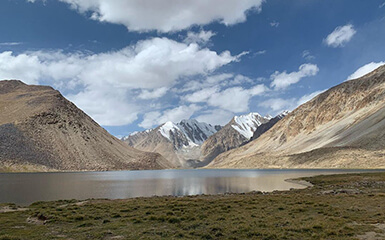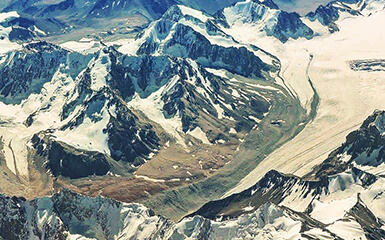Kok Gumbaz
Ajina Teppa
Ancient Panjakent
Anzob Tunnel
Beshkent Qala
Childukhtaron
Khazrati Shokh
Mug Teppa
Gharm Chashma
Hisor Historical
Haji Yaqub mosque
Hazrati-Bobo complex
Lake Iskanderkul
Kalai-Khumb
Karatag
Karon
Khishtin caravanserai
Khorog
Khulbuk
Lake Karakul
Abdullatif Sultan
Madrasai Kuhna
Abu Abdullah Rudaki
Khoja Mashhad
Khudoyor Valami
Makhmudi Azam
Mir Sayyid Ali Hamadani
Muhammed Bashoro
Sheikh Muslihiddin
Nurek Mountain Lake
Pamir
Sarazm
Sari-Khosor
Seven Lakes
Shirkent
Chiluchorchashma
Takht-i Sangin
Pamir National Park

Nurek (taj. Norak) is a city in Tajikistan, 70 km southeast of the capital Dushanbe, with a population of 20 thousand inhabitants.
The park extends over areas of the West and East Pamirs and, with its 2.6 million hectares, makes up 11 percent of the national territory of Tajikistan. It is naturally heterogeneous and consists of different biomes such as alpine and high alpine mountain regions, grasslands, steppe and desert.
The vegetation and the resulting range of species of animals reflect the different habitats in this large protected area. Plants from both the Southwest and Central Asian floristic regions can be found in the Tajik National Park.
Nationally rare and endangered vertebrates and birds live in the region. The former include the Argali (in German also giant wild sheep) (Ovis ammon group) and in the mountains the Irbis (Panthera uncia) and the Asiatic ibex (Capra sibirica).
The area of the park was declared a national park in 1992 by the then barely one-year-old state of Tajikistan.
Starting in the mid-1990s, a Tajik-Swiss research project developed strategies in ten different sectors for a sustainable development of the park region in a ten-year project.
In 2013, the World Heritage Committee added the park to the list of UNESCO World Heritage Sites.
The Tajik National Park is one of the largest high mountain protected areas in the Palearctic. The Fedchenko Glacier is the largest still existing valley glacier in Eurasia. The area of the Tajik National Park belongs to the Tajik state and has been placed under the highest protection status in the country.
The World Heritage Committee emphasized the enormous size of the area with a mountainous-alpine desert landscape, far from human habitation, as characteristic. This leads to a high degree of physical integrity. The park's core zone makes up 78 percent, a percentage that is otherwise found in hardly any world natural heritage area. For this reason, a compensation zone was dispensed with; instead, only three restricted use zones in the park's perepheria have been classified.

